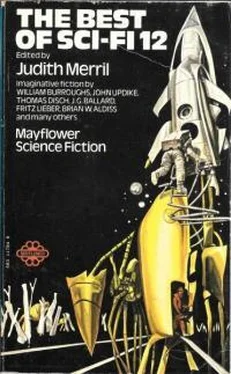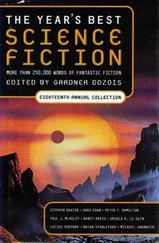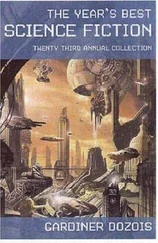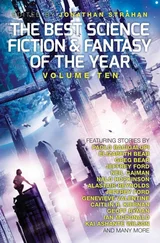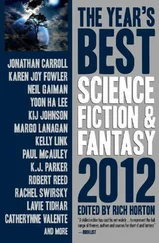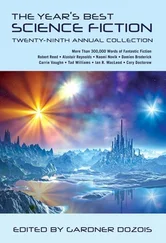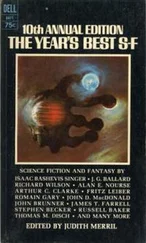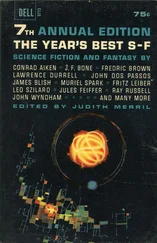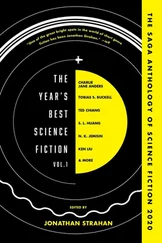The Best of Science Fiction 12
Здесь есть возможность читать онлайн «The Best of Science Fiction 12» весь текст электронной книги совершенно бесплатно (целиком полную версию без сокращений). В некоторых случаях можно слушать аудио, скачать через торрент в формате fb2 и присутствует краткое содержание. Год выпуска: 1970, ISBN: 1970, Издательство: Mayflower, Жанр: Фантастика и фэнтези, на английском языке. Описание произведения, (предисловие) а так же отзывы посетителей доступны на портале библиотеки ЛибКат.
- Название:The Best of Science Fiction 12
- Автор:
- Издательство:Mayflower
- Жанр:
- Год:1970
- ISBN:0583117848
- Рейтинг книги:4 / 5. Голосов: 1
-
Избранное:Добавить в избранное
- Отзывы:
-
Ваша оценка:
- 80
- 1
- 2
- 3
- 4
- 5
The Best of Science Fiction 12: краткое содержание, описание и аннотация
Предлагаем к чтению аннотацию, описание, краткое содержание или предисловие (зависит от того, что написал сам автор книги «The Best of Science Fiction 12»). Если вы не нашли необходимую информацию о книге — напишите в комментариях, мы постараемся отыскать её.
The Best of Science Fiction 12 — читать онлайн бесплатно полную книгу (весь текст) целиком
Ниже представлен текст книги, разбитый по страницам. Система сохранения места последней прочитанной страницы, позволяет с удобством читать онлайн бесплатно книгу «The Best of Science Fiction 12», без необходимости каждый раз заново искать на чём Вы остановились. Поставьте закладку, и сможете в любой момент перейти на страницу, на которой закончили чтение.
Интервал:
Закладка:
On reflection, that sounds rather like Nolan, so perhaps he managed to get away from the tornado. In the evenings Beatrice and I sit among the sonic statues, listening to their voices as the fair-weather clouds rise above Coral D, waiting for a man in a dark-winged glider, perhaps painted like candy now, who will come in on the wind and carve for us images of sea-horses and unicorns, dwarfs and jewels and children's faces.
After 'Belladonna', four Vermilion Sands stories appeared between 1961 and 1963. Three more (a 'journey of return to that exotic suburb of my mind') were published last year, filling out a book due shortly from Putnam. In all of them, the fabulous character of the landscape was clearly just that: fabulous — yet so familiar too somehow part of my own experience, that I once spent an afternoon poring over Gazettes and Atlases (never thinking to try an Anatomy) until I satisfied myself with a location on, or near, the coast of Guatemala. Apparently other readers were similarly compelled because the author asked me to specify here:
Vermilion Sands is not in Arizona, or anywhere in the USA, nor on another planet, which one or two people over the years have assumed. Also, there is no sea here, although so many of the images are marine — the Beach ambiance, sandrays and reefs. This is a desert area, but so crystallised that it has almost produced a new fauna and flora of its own.
Luana
Gilbert Thomas
After a day of Mycology — my specialty — I would turn to painting, to sculpture. Cutting women out of my life — I had been hurt enough. Art, life's shadow, is not a good substitute, but it would have to do. I'd begun by painting water colours of fungi. Nothing is so lovely as spring lichen spreading across the face of crisp rock, cracking it into sand. Fungi shattering the Parthenon into chips of marble has never failed to amaze me with its power. Thus does beauty become soil. It was after losing my first wife that I turned to sculpture.
Although I had captured the loveliness of Monascus purpureas on canvas, and my shaggymanes in tempera — guarded against decay by infusions of deoxyribonucleic acid, DNA, without which life cannot exist — had been purchased by the Museum of Modern Art in New York for their files.
I wanted to get my hands on something big. Although my first wife had not been large, nor my second. Little women in fact, docile as the gentle morel, delicious fried in butter or added to soups. Evidently they found me more docile still, interested only in my work. That the lowly ubiquitous Penicillium had saved millions and blues cheese gave them no cause to rejoice. They didn't care that man's journey into the expanding universe of the mind is powered by diethylamide tartrate of D-lysergic acid — LSD-25 — rooted in ergot, fungus.
My first wife screwed up her courage to the point of calling me moldy. "You moldy bastard," she said one morning over coffee and figs. I had taken to eating fruit for breakfast after my latest trip to Europe and found it suited my system. "Moldy fig!" our daughter Priscilla shot from the next room — she'd been put up to it, a fat little girl, clinically speaking. Then Elva had gone to the cookie jar and pulled out a sack of glazed doughnuts; and defiantly dumping them on the table was about to eat one when she noted — may God strike me dead — they were moldly. Bursting into tears she ran from the room screaming: " You did it — you did it!" I hadn't, of course. The fact is: spore is all around us, ready to feed on anything. Basidiomycetes will feed on solid plastic, changing it into sugar. Elva had waited too long to make her move and the hyphae had taken over.
Picasso is a good sculptor. (A man must have his heroes — particularly when depressed.) I've always enjoyed his goat created at Vallauris in the 50s, using a multiplicity of materials. Whatever came to hand. Wire, plaster, fruit crates. Finished, he discovered something was missing: the genitalia. His remedy — take an old tin can, flatten it and double it back on itself, then insert it in the moist plaster just below the stiff upturned tail and protruding gaspipe. Daring. I like to think I model myself on that Picasso.
My second wife, the Greek, was dark and dainty but she turned up one morning black and blue. She had taken to staying out overnight without my permission and I had noticed bruises and what appeared to be the marks of teeth on her from time to time. These occurred most usually about the throat with some finding their way down to the breast. Pressed for an explanation she would say she refused to wear glasses and had run into something. When I said it was more likely something had run into her, she asked for a divorce. I didn't remember her as being near-sighted. At the little quayside café at Piraeus she had seen well enough. Well enough to come over and ask: "Aren't you Doctor Raymond Kelpe, the famous mycologist from the United States?" When I said I was, she blushed, saying she was interested in molds herself, was in fact an advanced student specialising in torula as it pertains to cracking oil into food — petro-proteins — at the University of Athens; had actually seen me in lecture and knew I was in town to help save the Parthenon. Which still may be possible; often of a morning I've joined the little workman there on the Acropolis, his cup of cement helping us restore the chips to their historic position.
Pallas became my assistant, warning me to beware of the "I love you, kiss — ing" girls of Athens; and to make sure that I did, seduced me. It was simple in the laboratory, for I often work late. We were among the trays of saprophytes, which had just hatched — you could actually see the little champignons rise from their beds of crushed acorn, dead leaves, and coffee grounds lightly laced with merde . There in the moist scented air — for the little tan fruit has a delicious odour — she reached for a retort and fainted. Falling on a soft bed of mushrooms six feet long. Her laboratory dress, buttoned down the front, was somewhat askew, and as I bent to lend mouth-to-mouth resuscitation, she moaned.
We were married; and it was soon after arriving back in the United States that I noticed she was spending more and more time away from me — in the company of Dr. Gilroy Mannfried, doing research in parasurgery in Building 29. I am in Building 28. Although still my assistant, Pallas said she was sick of it and wanted to go back to Greece where the light was right, that she was only 18 and fungi had been a passing thing of youth. That she was now more interested in parasurgery, and stuck her tongue out at me. Until now she had been docile, kind — I didn't like to see my wife chewed up. I couldn't help thinking Dr. Mannfried had given her something — dexamyl or the like. And I found myself getting sleepy too early in the evening — 8 or 9 — sleeping like the dead at 10 or 11. I wouldn't have put it past them to be slipping me a little chloral hydrate. Love will find a way. No one knows better than a doctor that the Oath of Hippocrates is as outdated as the general practitioner. Once I thought I heard her scream but couldn't rouse myself from my stupor; it was possible they had invaded my bedroom for added thrills.
I returned to sculpture, experimenting after the manner of Picasso, using bread as the basic material; malleable, sprayed with plastic, a variety of textures and colours was possible, whole wheat to white to rye and pumpernickel, the whole allowed to overrun with algae to give a patina of age. I was invited to display in the patio of the Los Angeles Country Art Museum, drawing much good comment among the works of Giacometti, Rueben Nakian and Peter Voulkos. My work was impervious to the weather and this being a modern era no one found fault with my using bread as the basis for a work of art. Tempera, after all, being egg.
Читать дальшеИнтервал:
Закладка:
Похожие книги на «The Best of Science Fiction 12»
Представляем Вашему вниманию похожие книги на «The Best of Science Fiction 12» списком для выбора. Мы отобрали схожую по названию и смыслу литературу в надежде предоставить читателям больше вариантов отыскать новые, интересные, ещё непрочитанные произведения.
Обсуждение, отзывы о книге «The Best of Science Fiction 12» и просто собственные мнения читателей. Оставьте ваши комментарии, напишите, что Вы думаете о произведении, его смысле или главных героях. Укажите что конкретно понравилось, а что нет, и почему Вы так считаете.
